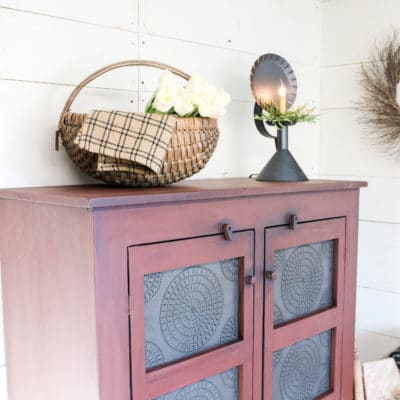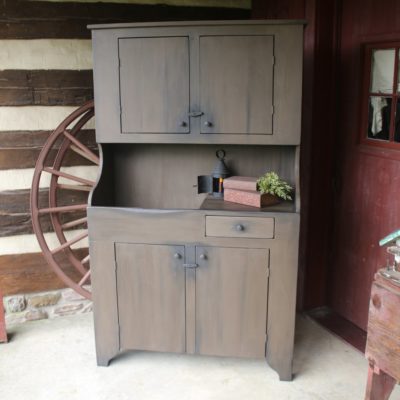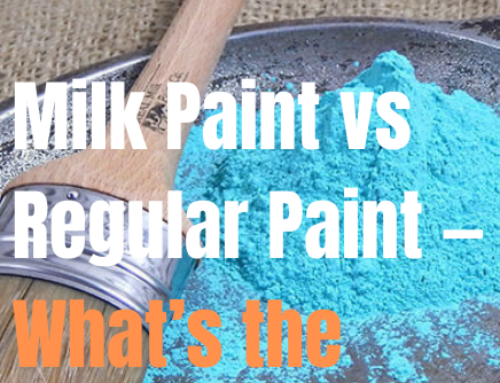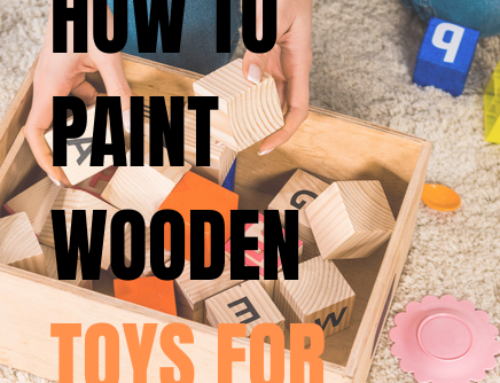If you’re looking for a unique way to distress well-worn finds from the garage and estate sales or thrift stores, consider painting discovered furniture primitive. This traditional folk art method offers a rustic touch to home decor, with its rough-hewn design and characteristic distressed aesthetic. Perfect for adding farmhouse flair to your kitchen, country charm to your dining room and shabby-chic appeal to your front stoop, primitive furniture is an easy-to-achieve decorative method ideal for beginners and experts alike.
Defining What Primitive Furniture Styling Means
 Primitive furniture refers to a folk art style that was a mainstay of early American life when there was no means of mass production. Artisans and carpenters built furnishings from whatever materials they could find, creating simple pieces ideal for the heavy-duty use they saw by the farmers and frontiersmen of their heyday.
Primitive furniture refers to a folk art style that was a mainstay of early American life when there was no means of mass production. Artisans and carpenters built furnishings from whatever materials they could find, creating simple pieces ideal for the heavy-duty use they saw by the farmers and frontiersmen of their heyday.
Characterized by muted colors and a weathered appearance, primitive furniture typically utilizes natural fabrics like burlap and cotton when it features fabric at all. The key element that all primitive furniture shares is the impression it’s been passed down from generation to generation — even when you painted it yourself.
What to Look for in Potentially Primitive Furniture
So long as the piece has a strong foundation and not too much damage, you can use it to create your very own treasure to pass along to your own family. When shopping for furniture to paint with primitive styling, look for things like unique detailing. Though these pieces may look a little rough, they typically have a certain sturdiness about them due to the high-quality handmade craftsmanship.
Mortise-and-tenon or dovetail joinery are common in primitive furniture, as is construction from easily available woods such as pine or birch. Some primitive furniture candidates may have elaborate detailing like lathe-turned spindle legs common on Windsor chairs, while others may sport a more spare, minimalist look due to sparse Quaker styling.
Differences Between Primitive, Rustic and Country Styles
Lots of decorators use the terms primitive, rustic, and country style interchangeably, though the designs differ in numerous ways. The interchangeability, however, comes from the ability of the pieces to pair well together such as in farmhouse and shabby-chic or cottage-chic decor styles. It helps to know the difference between the styles so you better understand how to renovate them.
Primitive is more of a description for furniture than a style since it notes the age and production method. In a word, primitive pieces either are or look handmade by someone without formal training, and these items typically have utilitarian functionality in that they DO something — think armoires for storing clothing and crude benches with room under the seat to stow tools or utensils. Additionally, since these Americana pieces use basic materials, they’re typically painted, usually with more muted colors.
By contrast, rustic furniture showcases woodgrain and is rarely painted at all. Whereas primitive furniture has a weathered look, rustic furnishings actually flaunt rough surfaces in some instances where craftsmen preserved the knots in the wood for natural beauty. Country style encompasses what we think of as farmhouse, cottage-chic and shabby-chic styles. The main indicator of this styling is a simple, unsophisticated aesthetic, typically with a brighter, bolder color scheme than primitive furniture.
Pieces That Benefit Most from Primitive Paint Jobs

As stated above, an important component of primitive furniture is that it does something.
For this reason, multipurpose furnishings such as trestle tables with storage underneath and pantry cabinets make a great choice for painting primitive when you want to deck out your dining room or kitchen.
Heavy dressers benefit from the primitive treatment in the bedroom, while simple tables and small chests work well as accent pieces in hallways and living rooms.
Consider austere seating options like a backed bench for porches and patios when you want to paint a primitive piece to showcase in your outdoor space.
How to Paint Furniture Primitive
This tutorial walks you through how to paint furniture primitive by using Real Milk Paint. Popular in the time period we think of as Americana, milk paint offers an eco-friendly and authentic alternative to modern paints when you want to paint furniture primitive. This medium is made with 100% natural ingredients and no volatile organic compounds (VOCs), so it works great in homes with kids and pets. Additionally, Real Milk Paint requires little prep work for use, making it a fast, simple way to paint furniture primitive.
To get started lay down a drop cloth, place your piece atop it, and remove all hardware. Next, clean the furniture you’re painting primitive with a reliable cleaner such as Tri-Sodium Phosphate from the Real Milk Paint Co. If the piece you’re painting has paint on it already, you can leave it on, but you may need to add Ultra Bond Adhesion Promoter to your milk paint mixture to ensure a good bond. You may also want to sand the piece lightly to achieve a good tooth. If your furniture piece is painted with lead-based paint, ensure to use proper safety measures while removing lead-based paint like using Soy Gel or wet sanding and removing any dust with a damp cloth. Grab the brushes you wish to use now and get ready to mix your base and layer colors.
Real Milk Paint comes in a powdered format, so you need to add water to it at a 1:1 ratio and wait 20 minutes or so until the foam dies down after mixing. Alternatively, you can mix it with Anti-Foaming Agent for immediate use. When your paint is ready, apply your base color to the piece and let it dry for a couple of hours, then add the layered color on top of it. When both coats dry, strategically sand the edges and spots that would normally see wear with rough-grit sandpaper to get the weathered look of primitive furniture.
Now that you know how to paint furniture primitive, you can use your new skill to redo pieces you find at yard sales and off-the-beaten-path antique shops — or even pieces you make yourself! With that in mind, keep reading to learn more about how the owners of Red Fox Primitives turned their passion for primitive furniture into a unique business that uses products from the Real Milk Paint Co. to enhance the pieces they craft and sell. Their handmade items are brand new, but emote the same authentic look as century old primitive furniture.

Meet A Maker: Red Fox Primitives
What is your business or online name? Red Fox Primitives
What is your first name? Katie
Tell us a little bit about yourself and what you do? I am the Painter for Red Fox Primitives. We are a husband and wife team who run a small Home Furniture and Decor Business. We build our own primitive style furniture, paint it, and ship all over the USA. We also offer primitive farmhouse style decor as well as a Master Paint Class. I have just started teaching all of my painting secrets!
Could you explain your journey in how you came to be in the craft/trade that you are currently in? Fell into it. My husband is a very skilled carpenter so we started a side business and I volunteered to paint. Always loved art class and getting creative so I had a lot of fun figuring it out!
What is your favorite part about your craft/trade? The challenge of taking something that is made of new wood and making it look old and worn. Really looking at a piece and trying to figure out how it would look if it was 100 years old?
How did you find out about Real Milk Paint Co? You were local! About 30 minutes away from where you first started!
What is your favorite project to do with our products? Paint Cupboards – It’s what I do!
Do you have a particularly favorite product of ours? If so, what would be one tip/trick to offer to others that you have found produced great results? All of them! There are so many ways to use every single product and it will give you different results, so I would keep experimenting with all the finishes!
If you had to give one tip to those looking to “follow in your footsteps” what would it be? Keep experimenting and painting until you get your own signature look!
Where can people see your work or contact you? https://redfoxprimitives.com/, https://www.instagram.com/redfoxprimitives/, and https://www.facebook.com/redfoxprimitives
Products Used: Milk Paint, Waxes, Pastes, Tung Oil – All of it!
Any additional thoughts, comments, recommendations you would like to share? It’s a great family company that has great products with their Milk Paint and Finishes. Love that the products are eco-friendly and don’t have those harsh smells!



